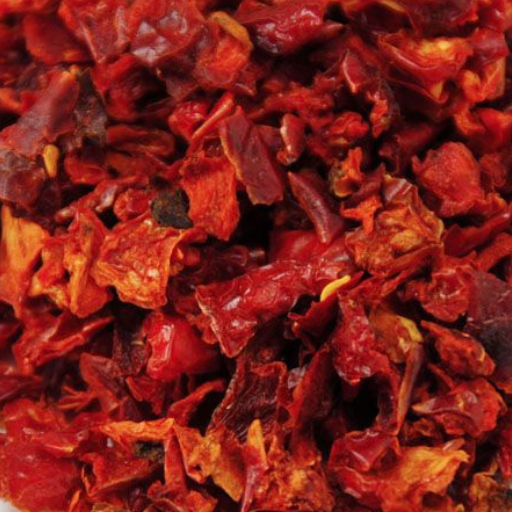Peppers are native to Mexico, Central America, the Caribbean and northern South America. Pepper seeds were imported to Spain in 1493 and then spread through Europe and Asia. The mild bell pepper cultivar was developed in the 1920s, in Szeged, Hungary. Preferred growing conditions for bell peppers include warm, moist soil in a temperature range of 21 to 29 °C (70 to 84 °F).
The name pepper was given by Europeans when Christopher Columbus brought the plant back to Europe. At that time, black pepper (peppercorns), from the unrelated plant Piper nigrum originating from India, was a highly prized condiment. The name pepper was applied in Europe to all known spices with a hot and pungent taste and was therefore extended to genus Capsicum when it was introduced from the Americas. The most commonly used name of the plant family chile is of Mexican origin, from the Nahuatl word chilli.
The terms bell pepper (US, Canada, Philippines), pepper or sweet pepper (UK, Ireland, Canada, South Africa, Zimbabwe), and capsicum (Australia, Bangladesh, India, Malaysia, New Zealand, Pakistan and Sri Lanka) are often used for any of the large bell-shaped peppers, regardless of their color. The fruit is simply referred to as a “pepper”, or additionally by color (“green pepper” or red, yellow, orange, purple, brown, black). In the Midland region of the U.S., bell peppers, either fresh or when stuffed and pickled, are sometimes called mangoes.
In some languages, the term paprika, which has its roots in the word for pepper, is used for both the spice and the fruit – sometimes referred to by their color (for example groene paprika, gele paprika, in Dutch, which are green and yellow, respectively). The bell pepper is called “パプリカ” (papurika) or “ピーマン” (pīman, from French piment pronounced with a silent ‘t’) in Japan.In Switzerland, the fruit is mostly called peperone, which is the Italian name of the fruit. In France, it is called poivron, with the same root as poivre (meaning “pepper”) or piment. In Spain it is called pimiento morrón, the masculine form of the traditional spice, pimienta and “morrón” (snouted) referring to its general shape. In South Korea, the word “피망” (pimang from the French piment) refers to green bell peppers, whereas “파프리카” (papeurika, from paprika) refers to bell peppers of other colors. In Sri Lanka, both the bell pepper and the banana pepper are referred to as a “capsicum” since the bell pepper has no Sinhalese translation. In Argentina and Chile, it is called “morrón”.
REFERENCES
